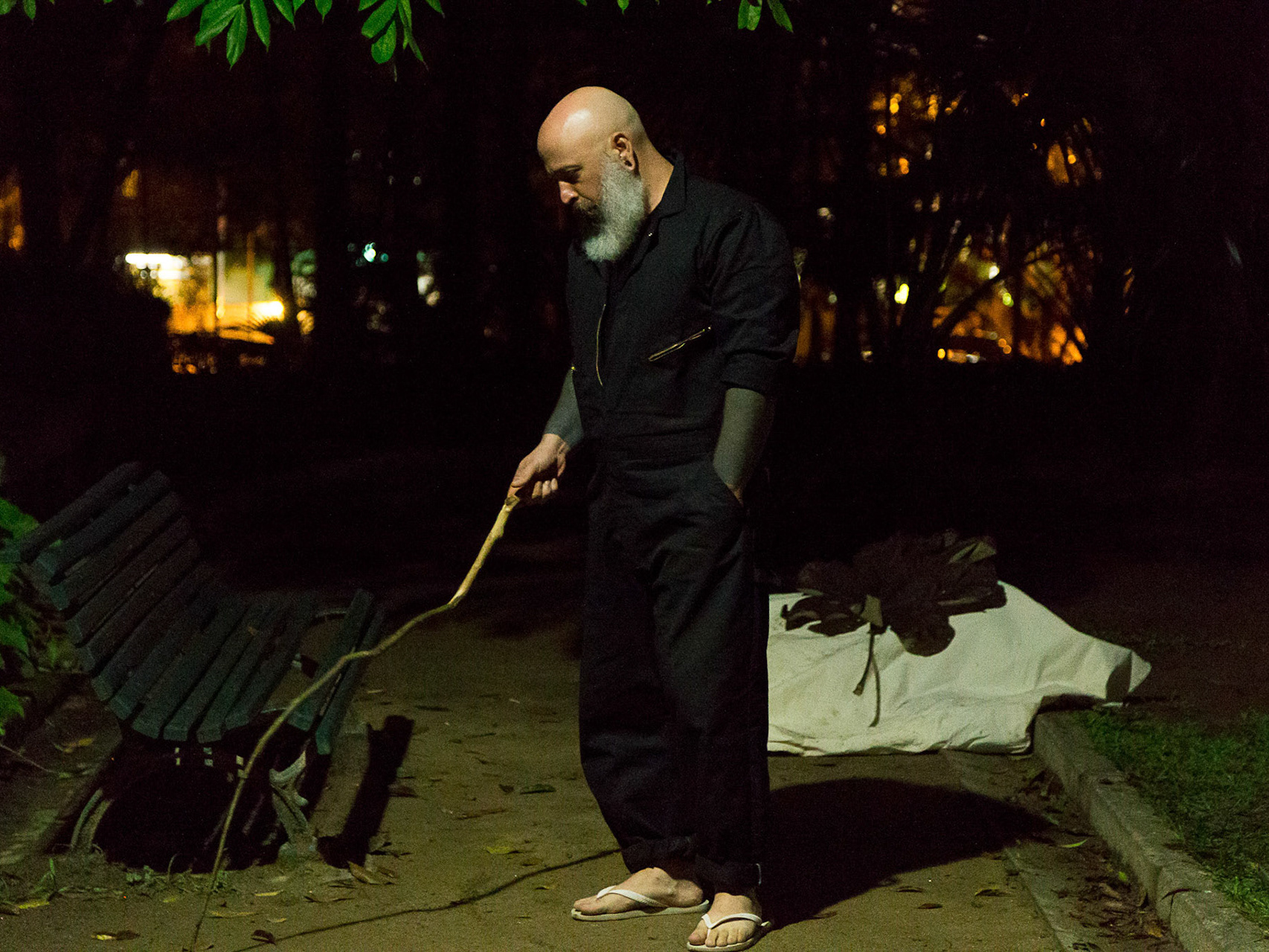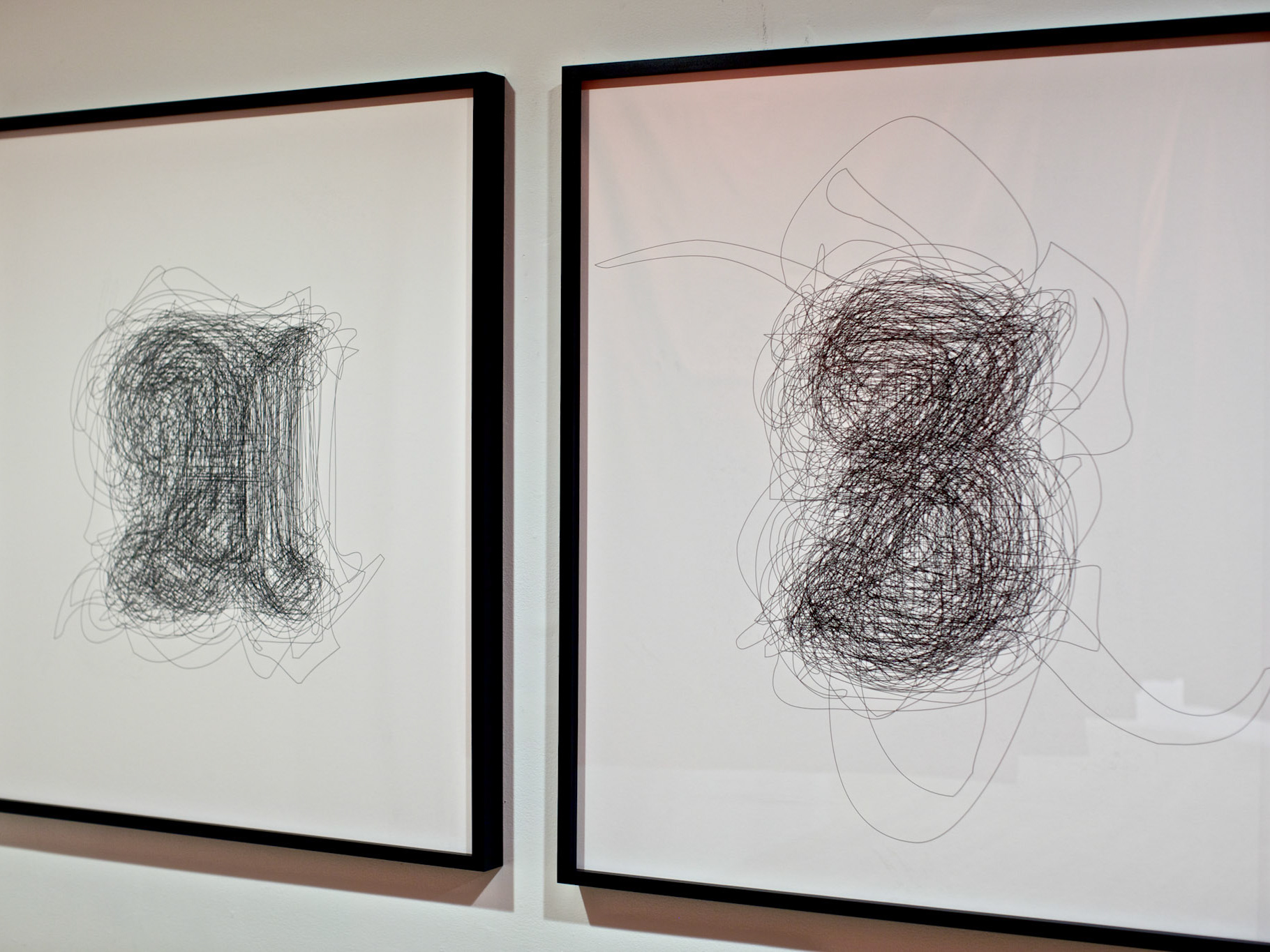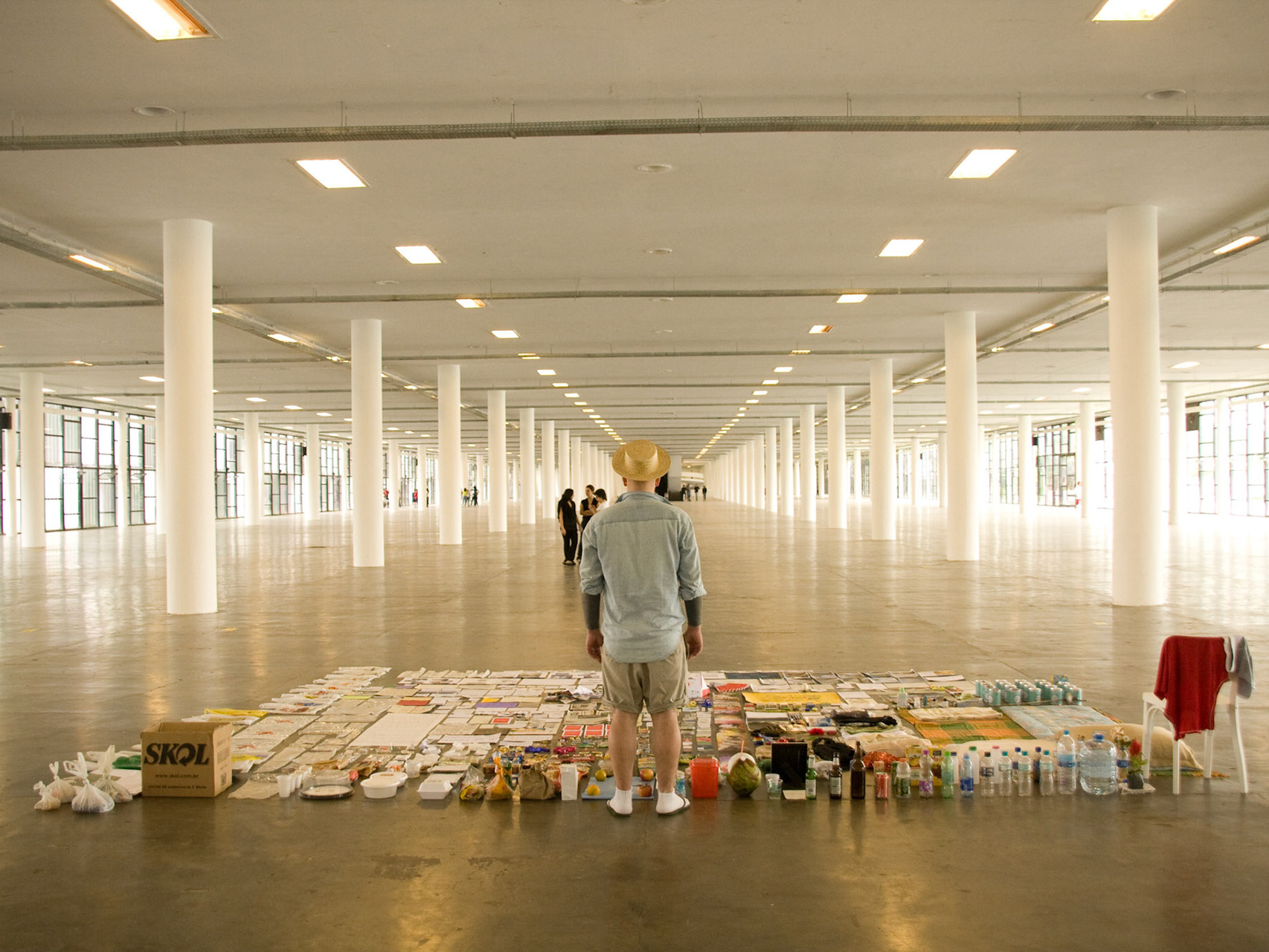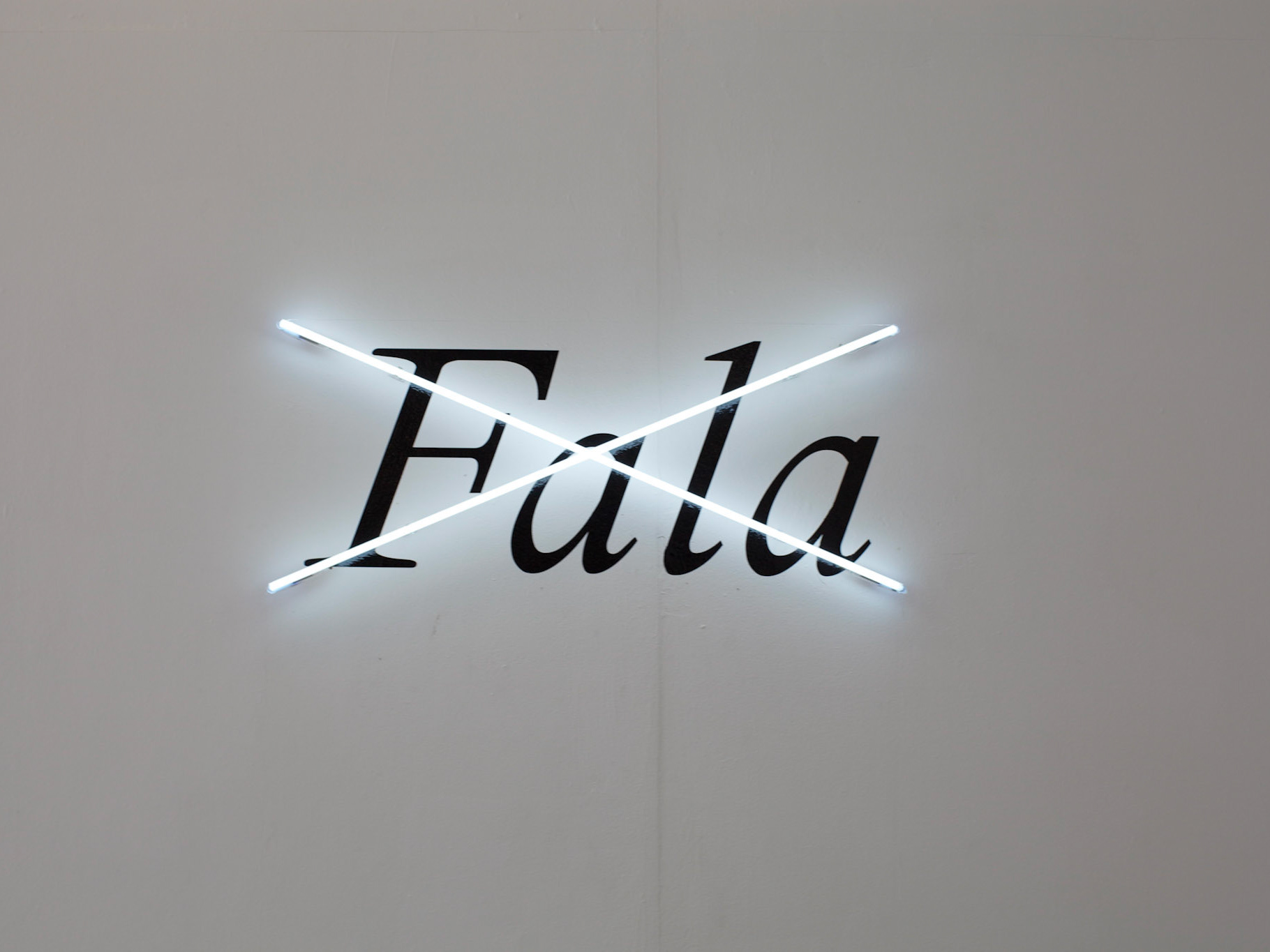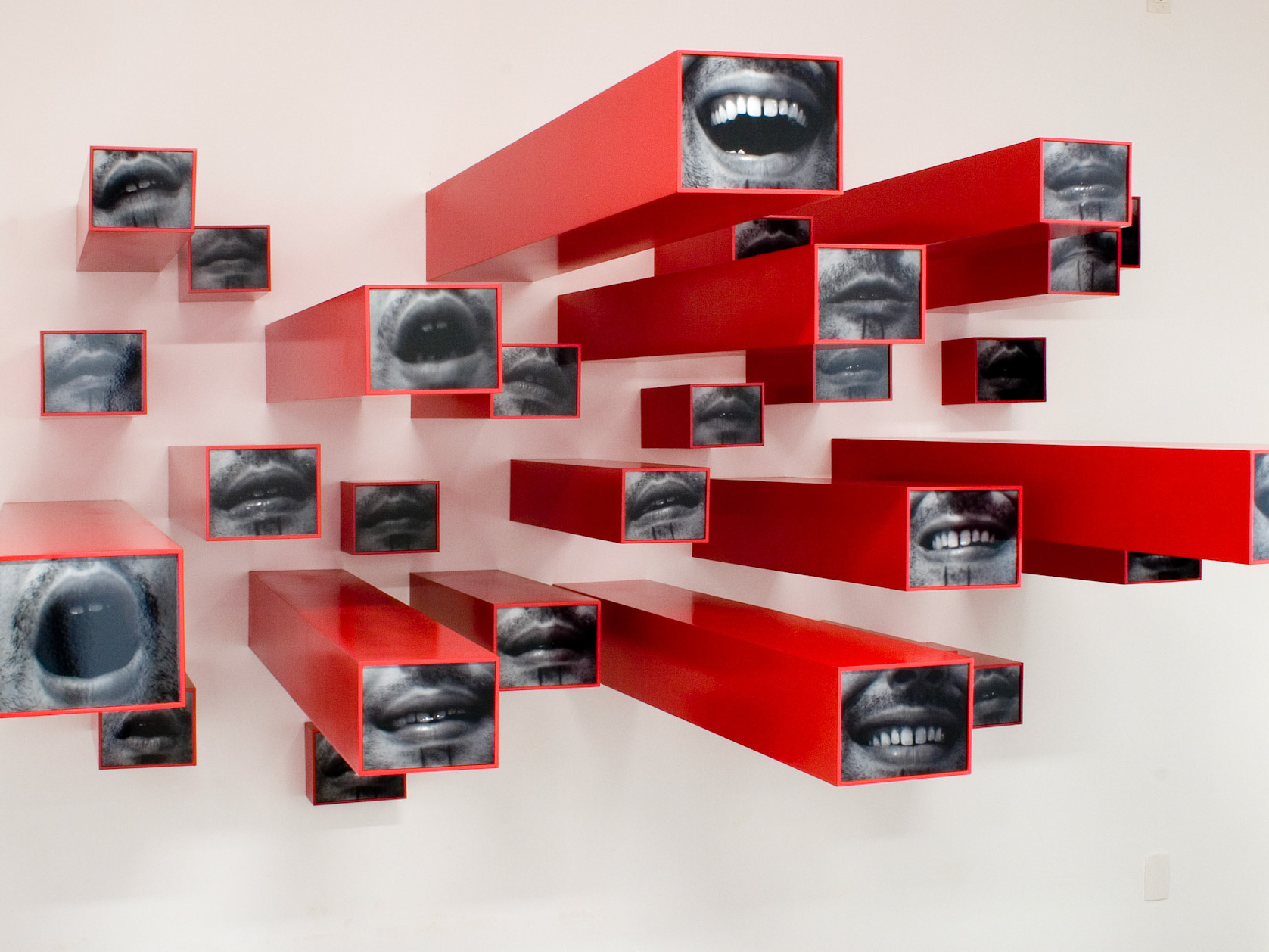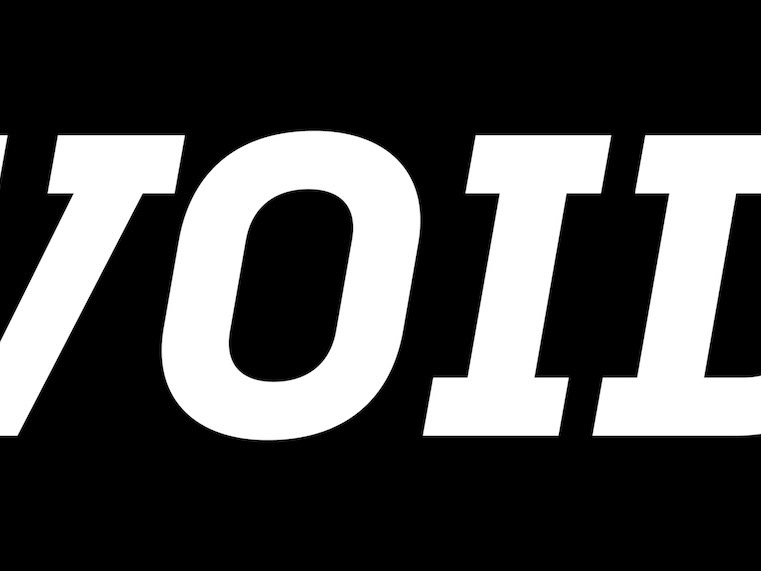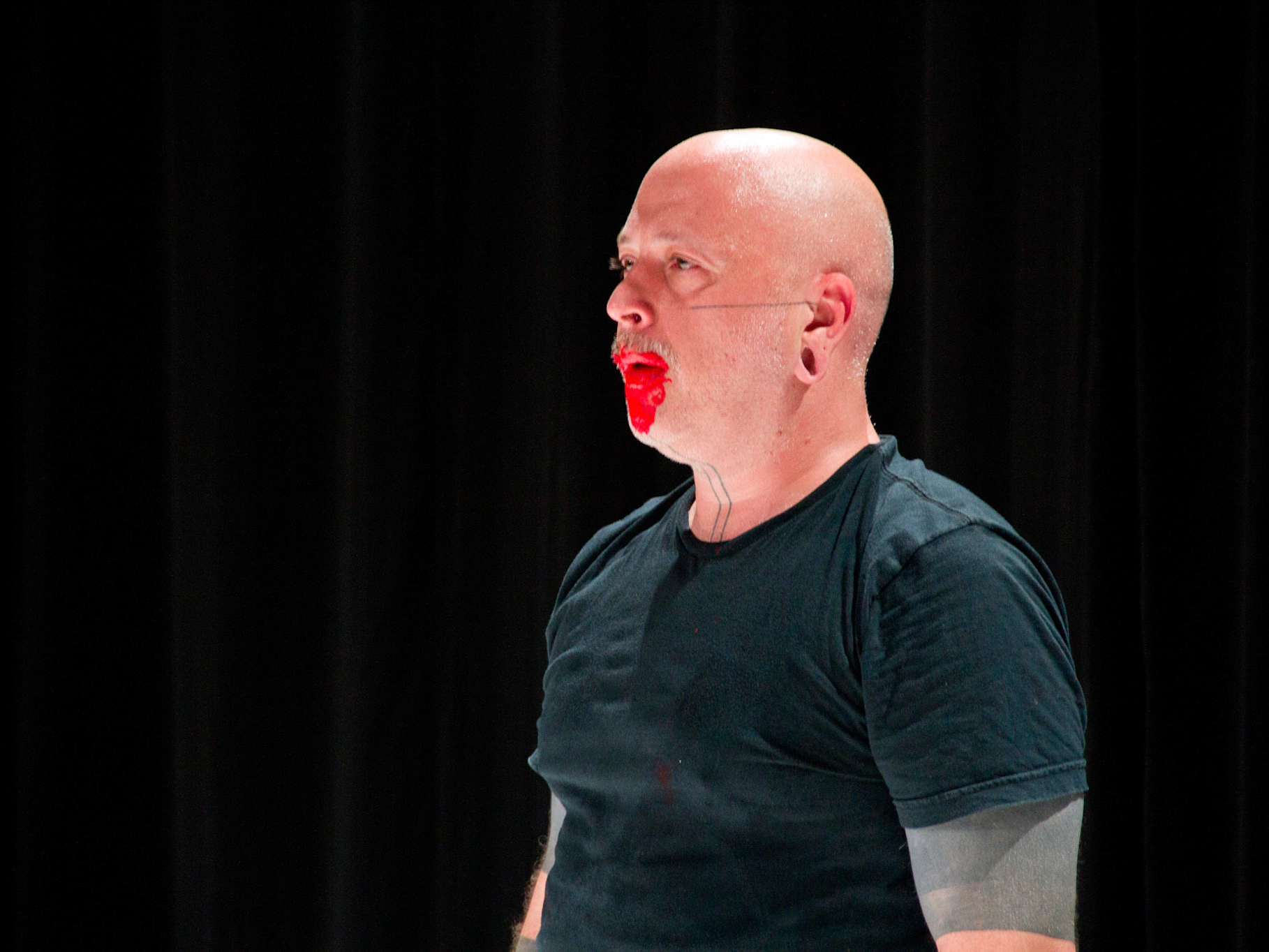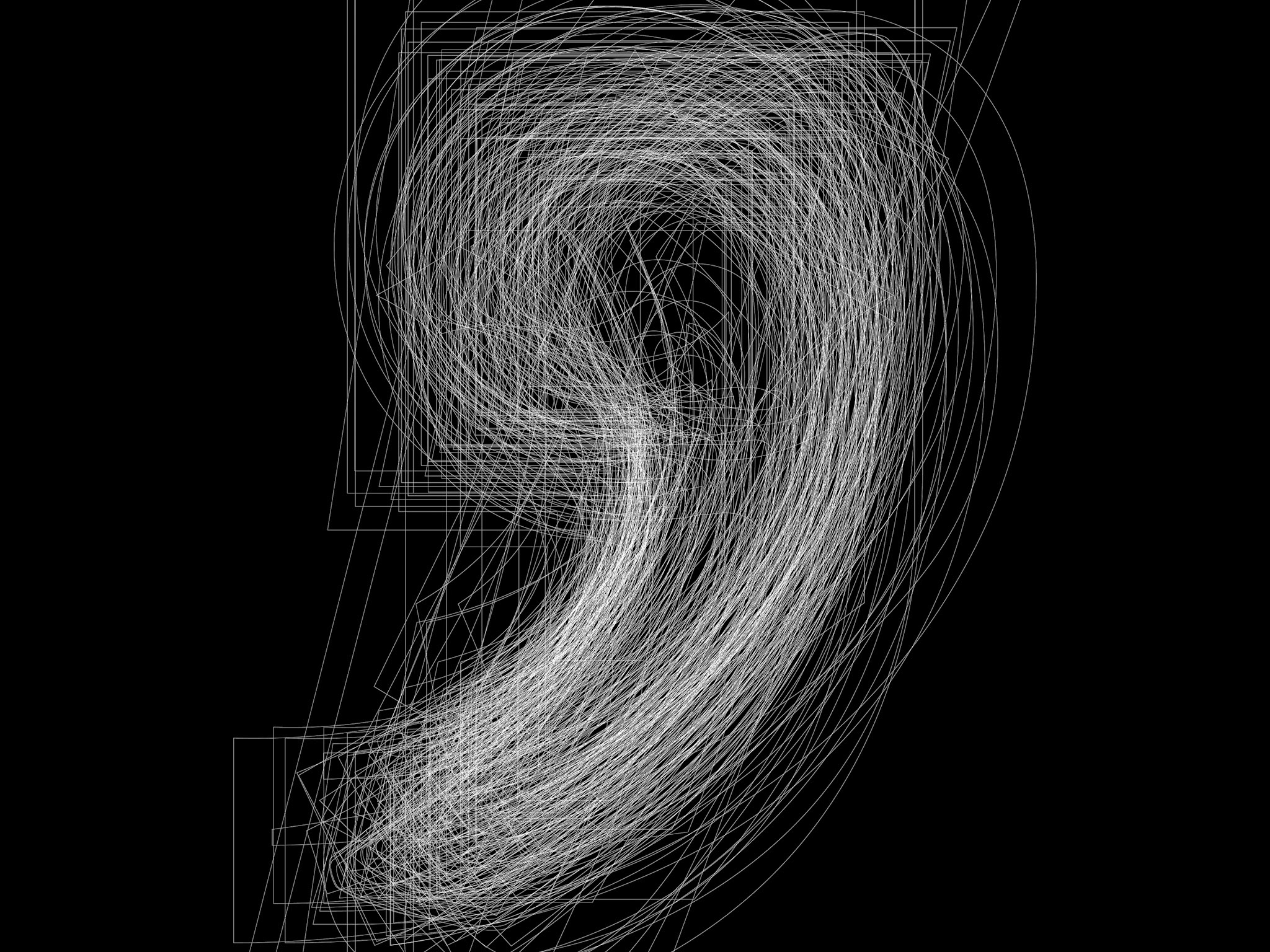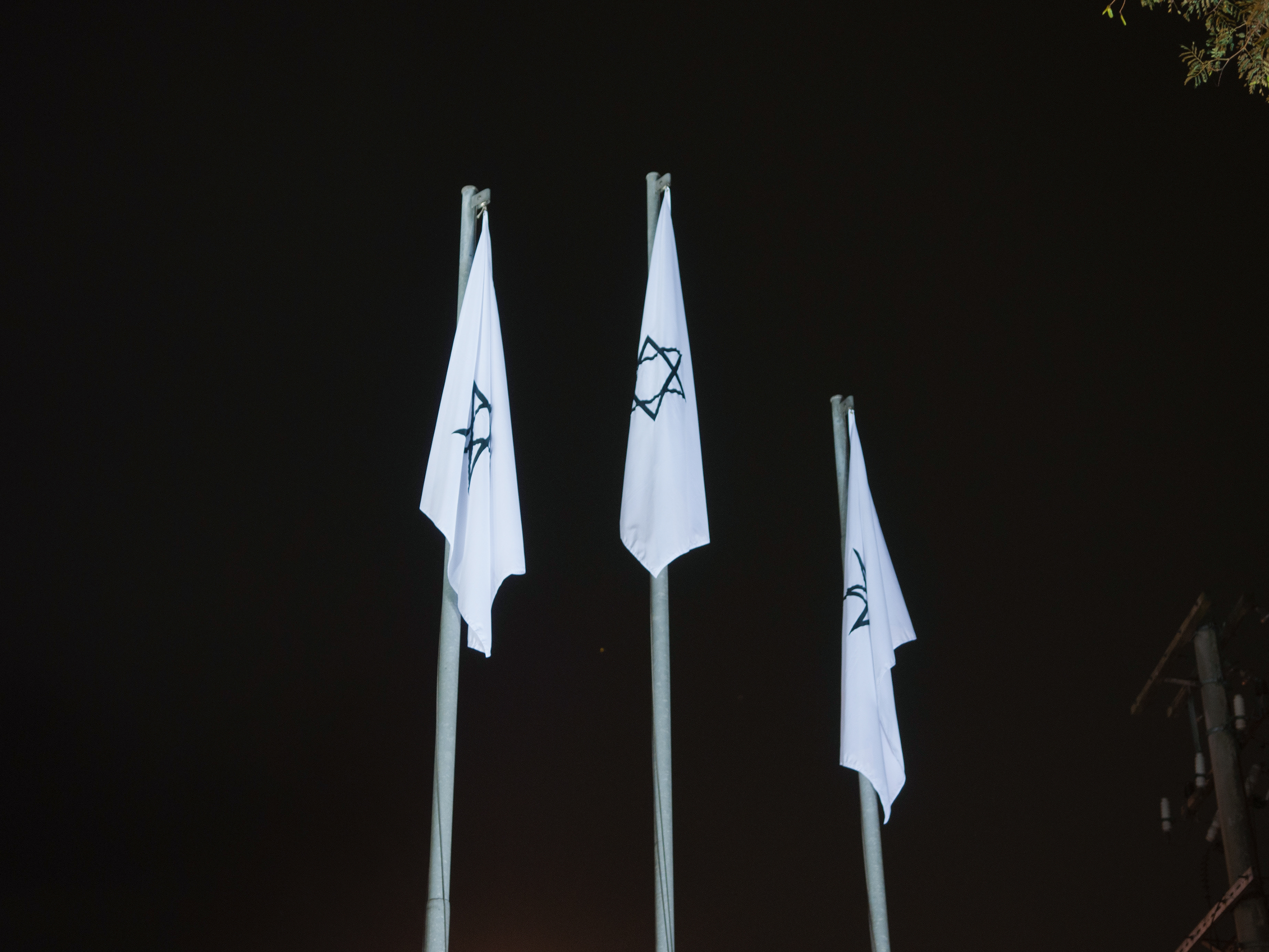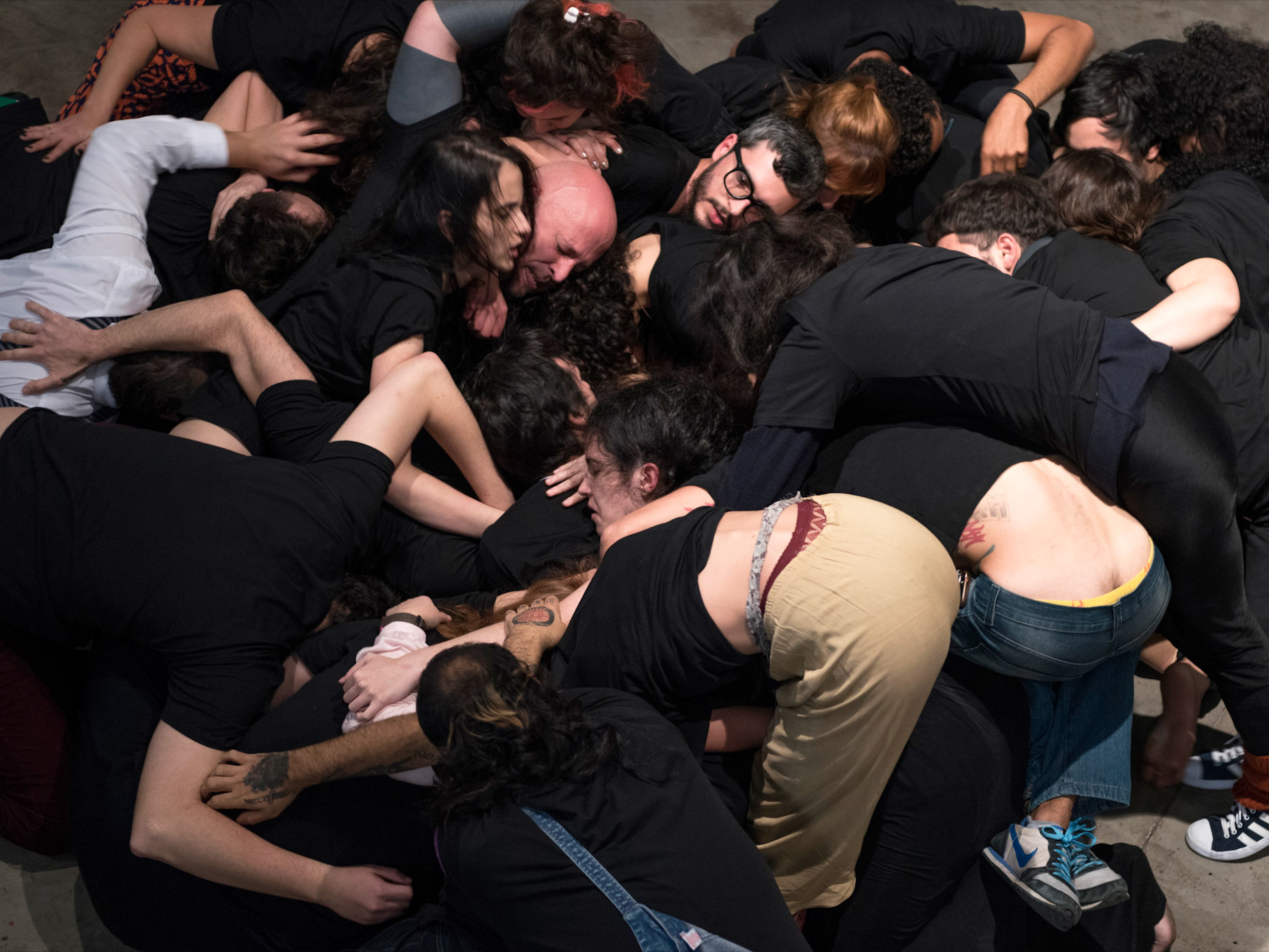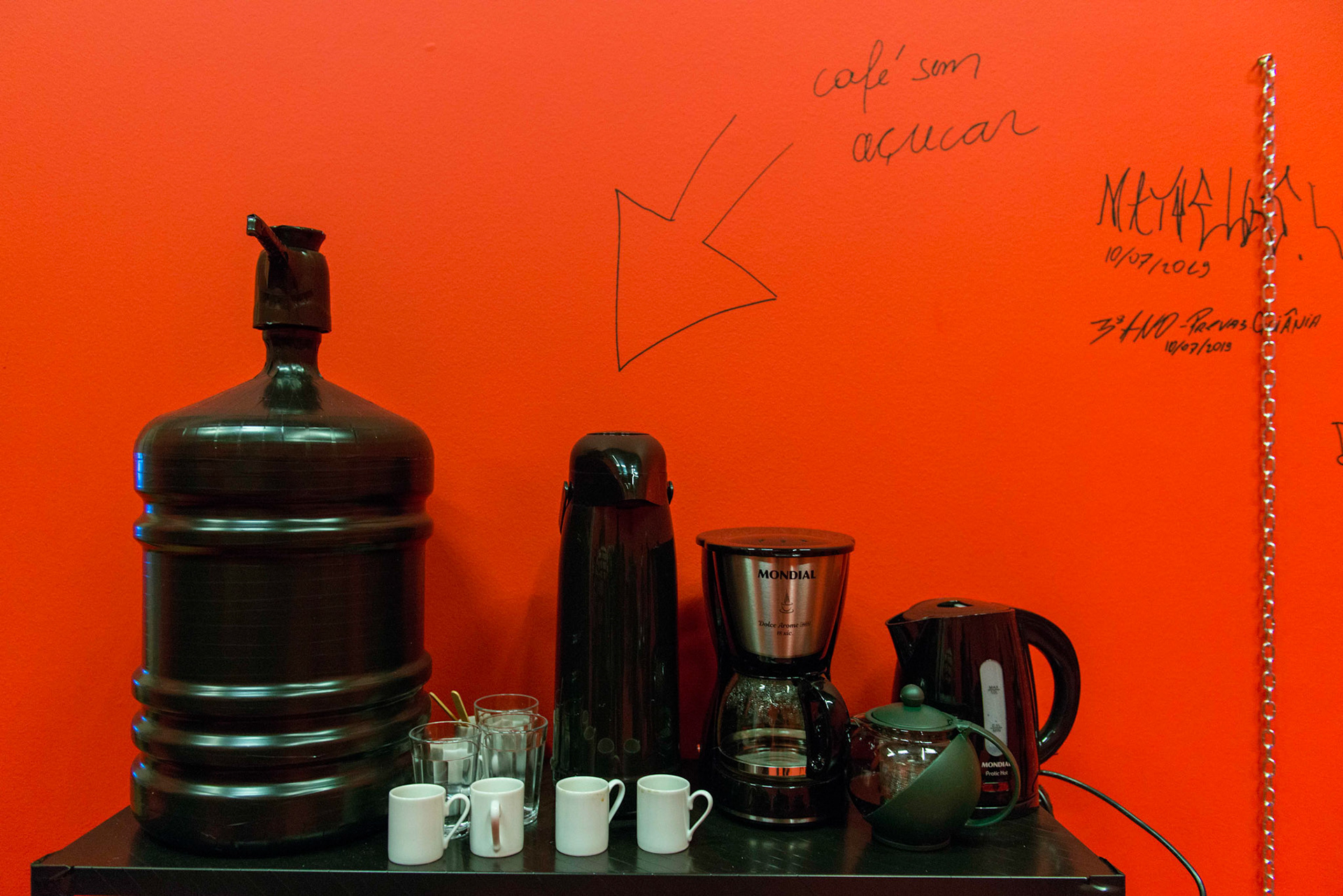
Agora, 2019
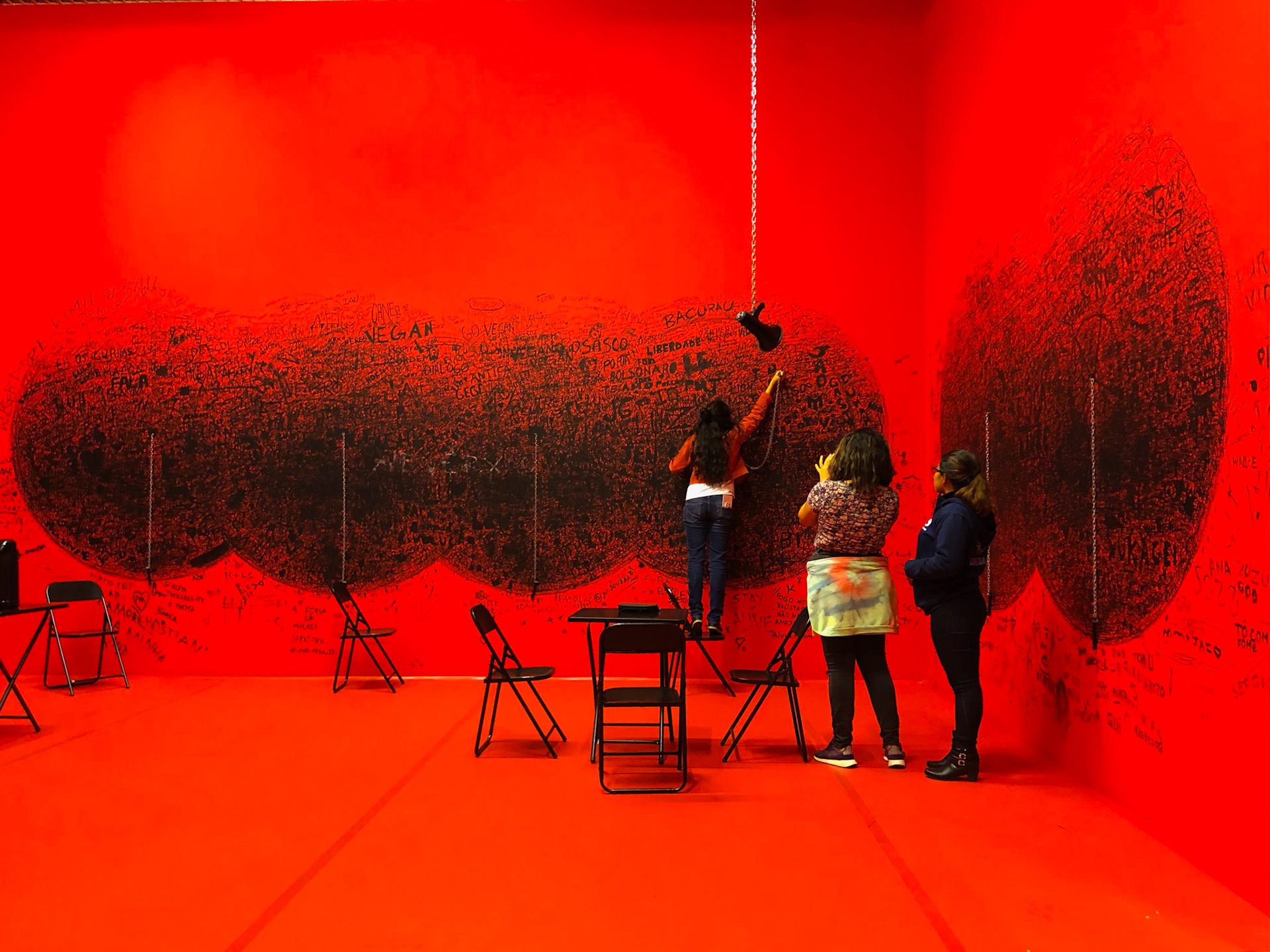
Agora, 2019
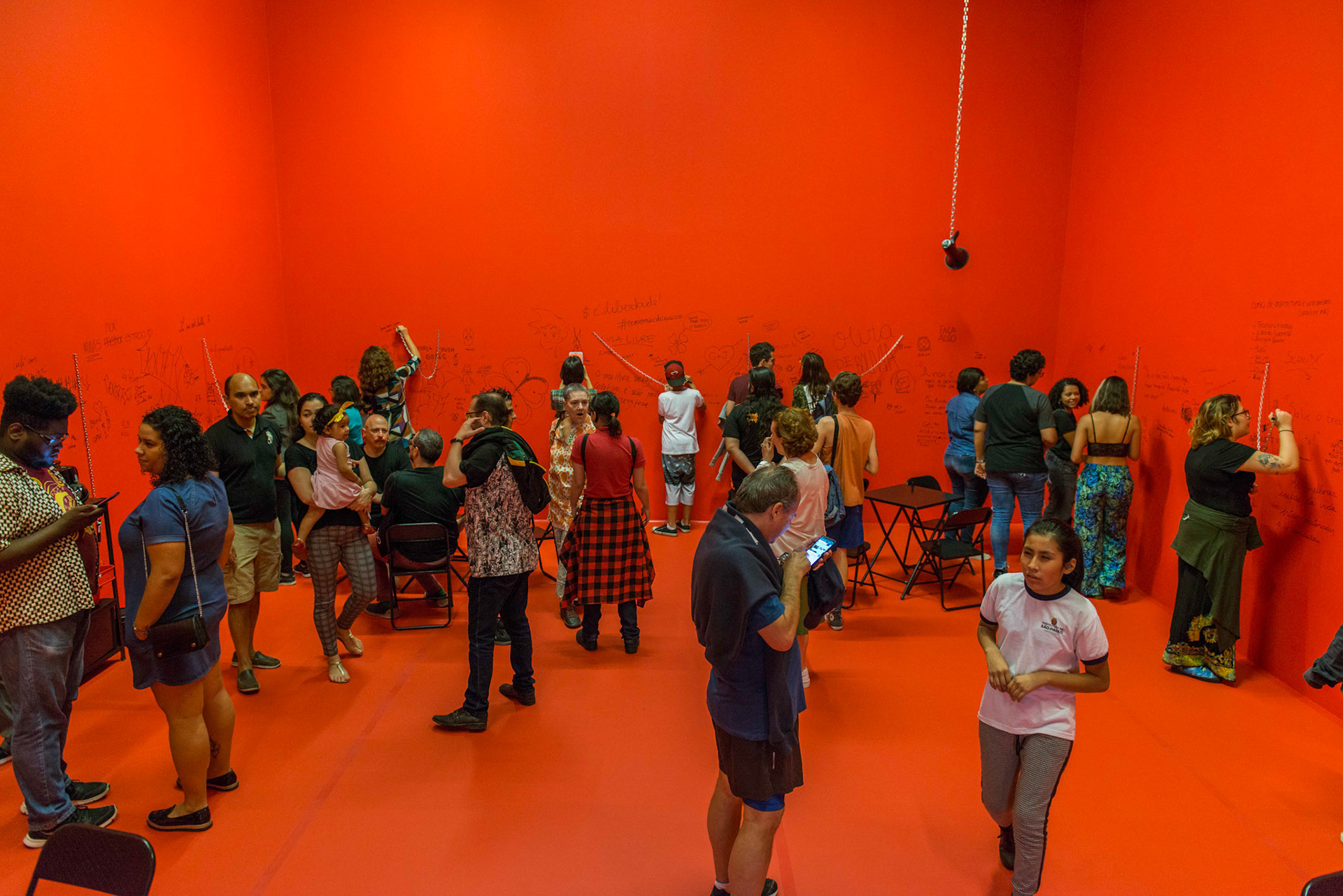
Agora, 2019
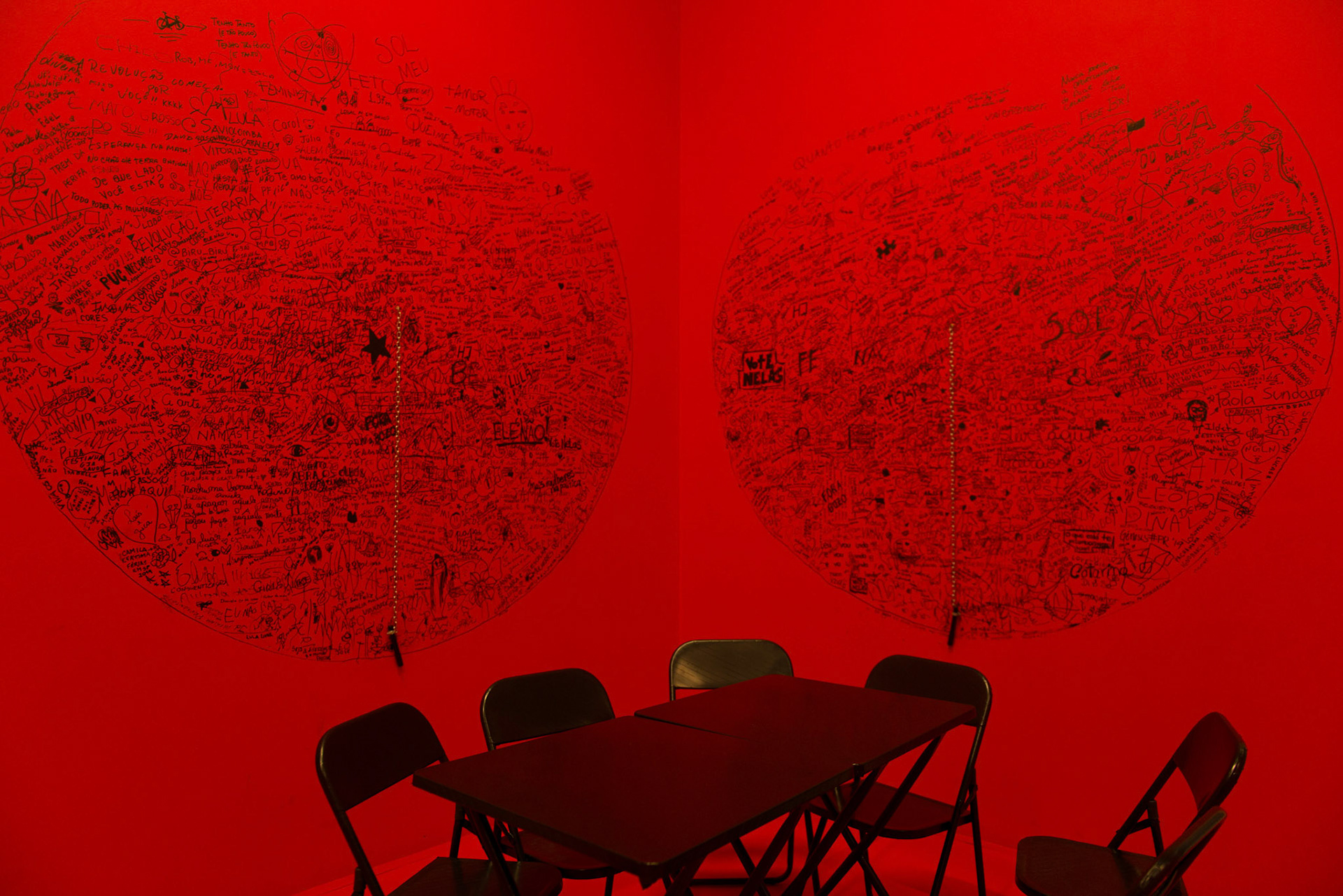
Agora, 2019
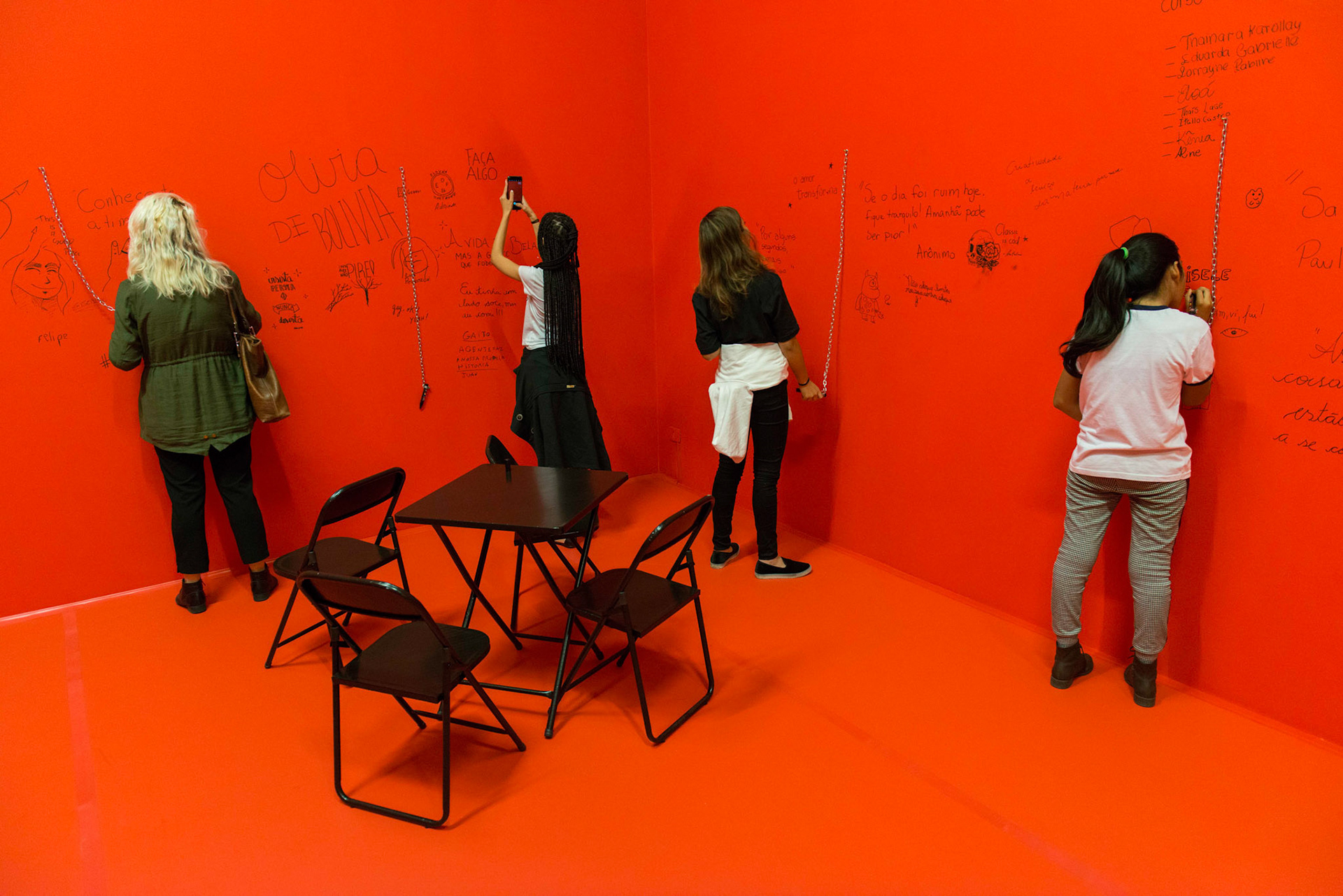
Agora, 2019
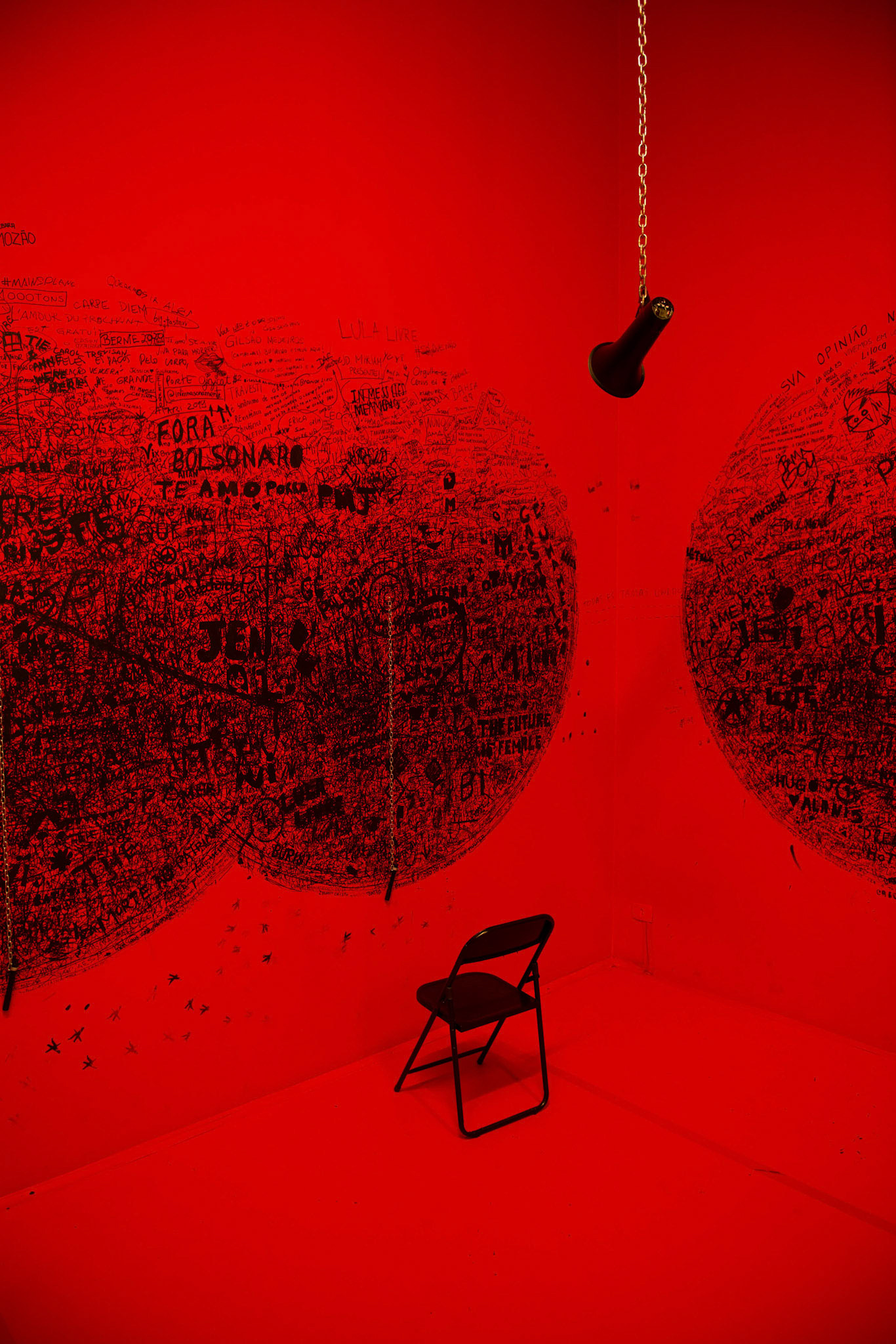
Agora, 2019
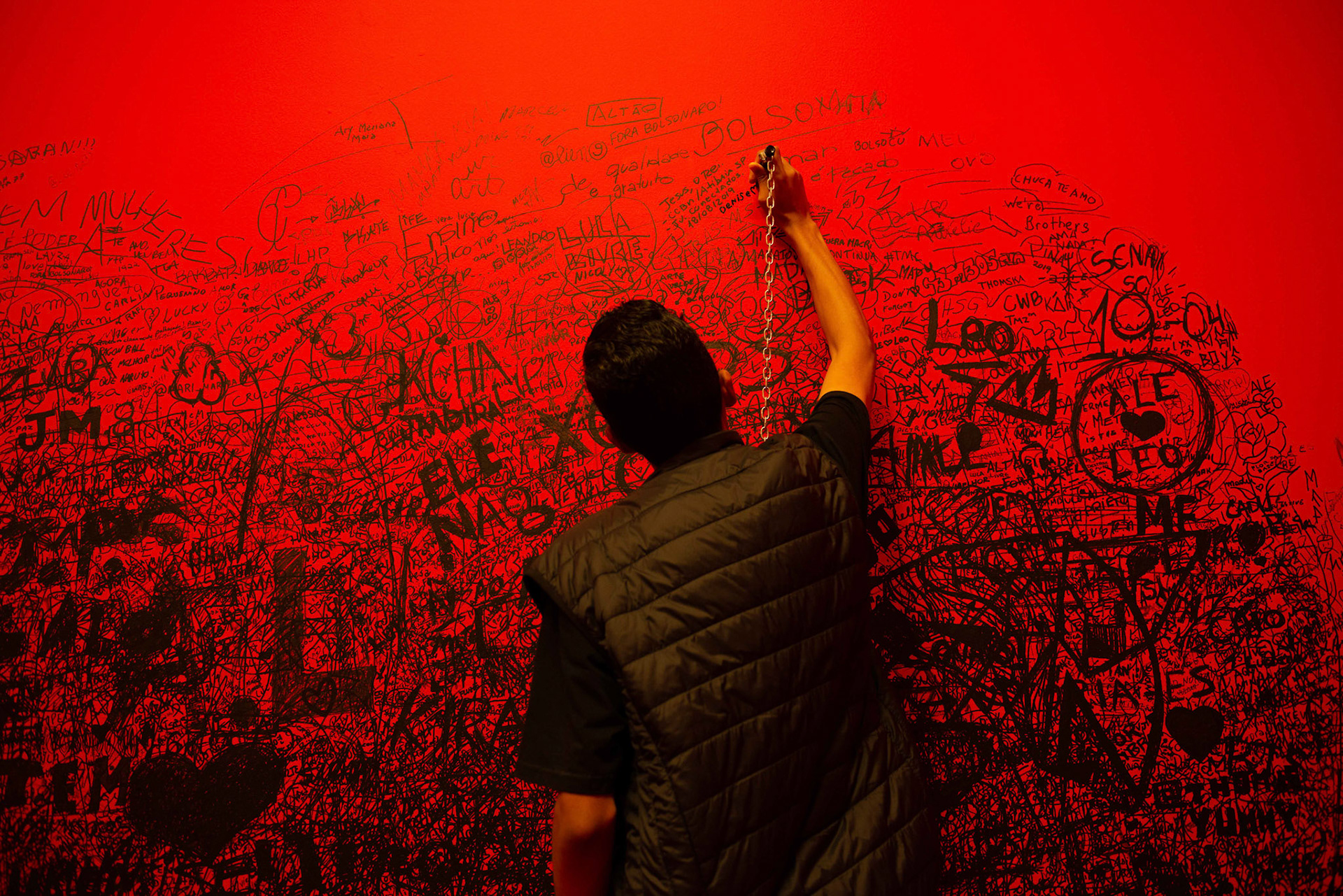
Agora, 2019
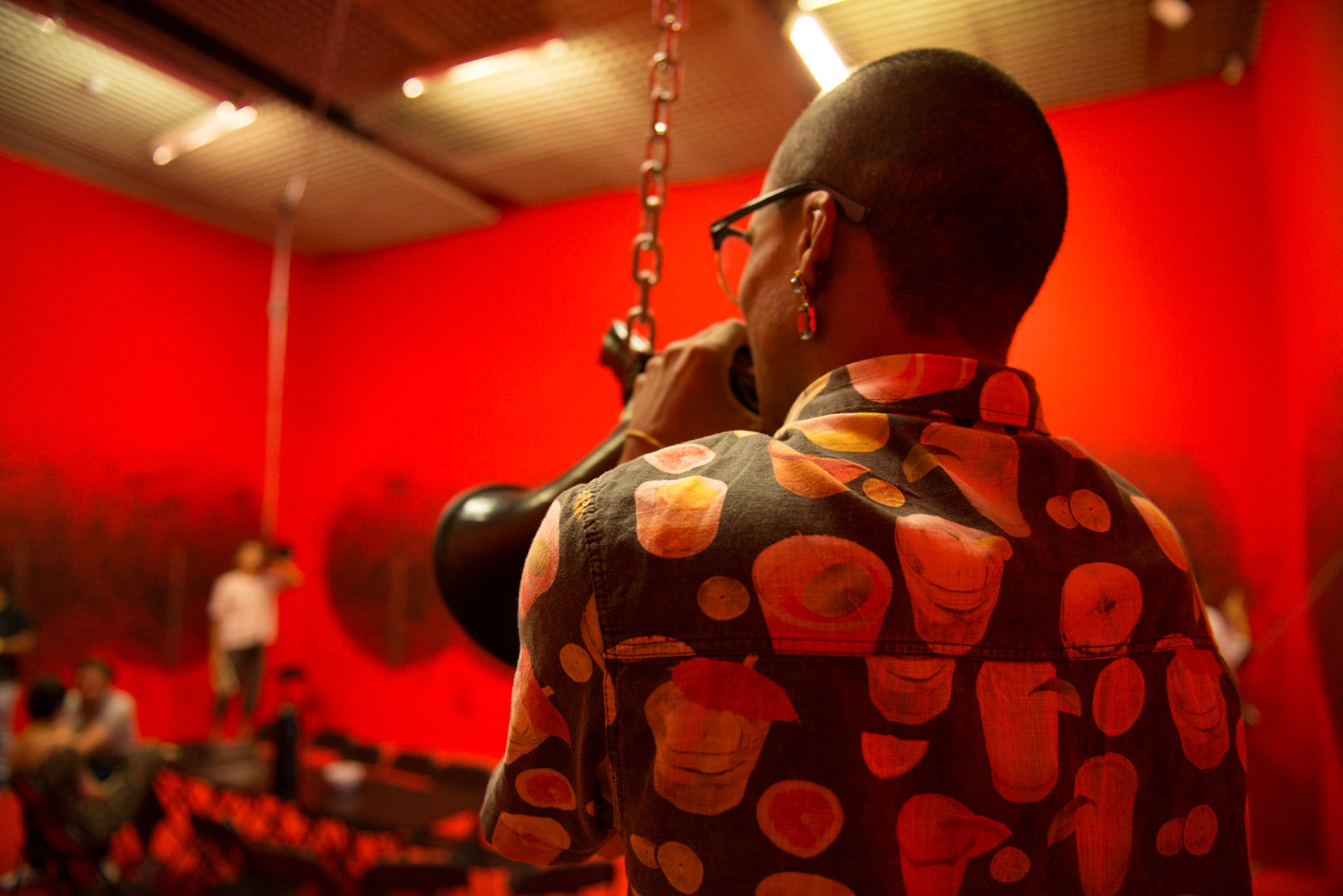
Agora, 2019
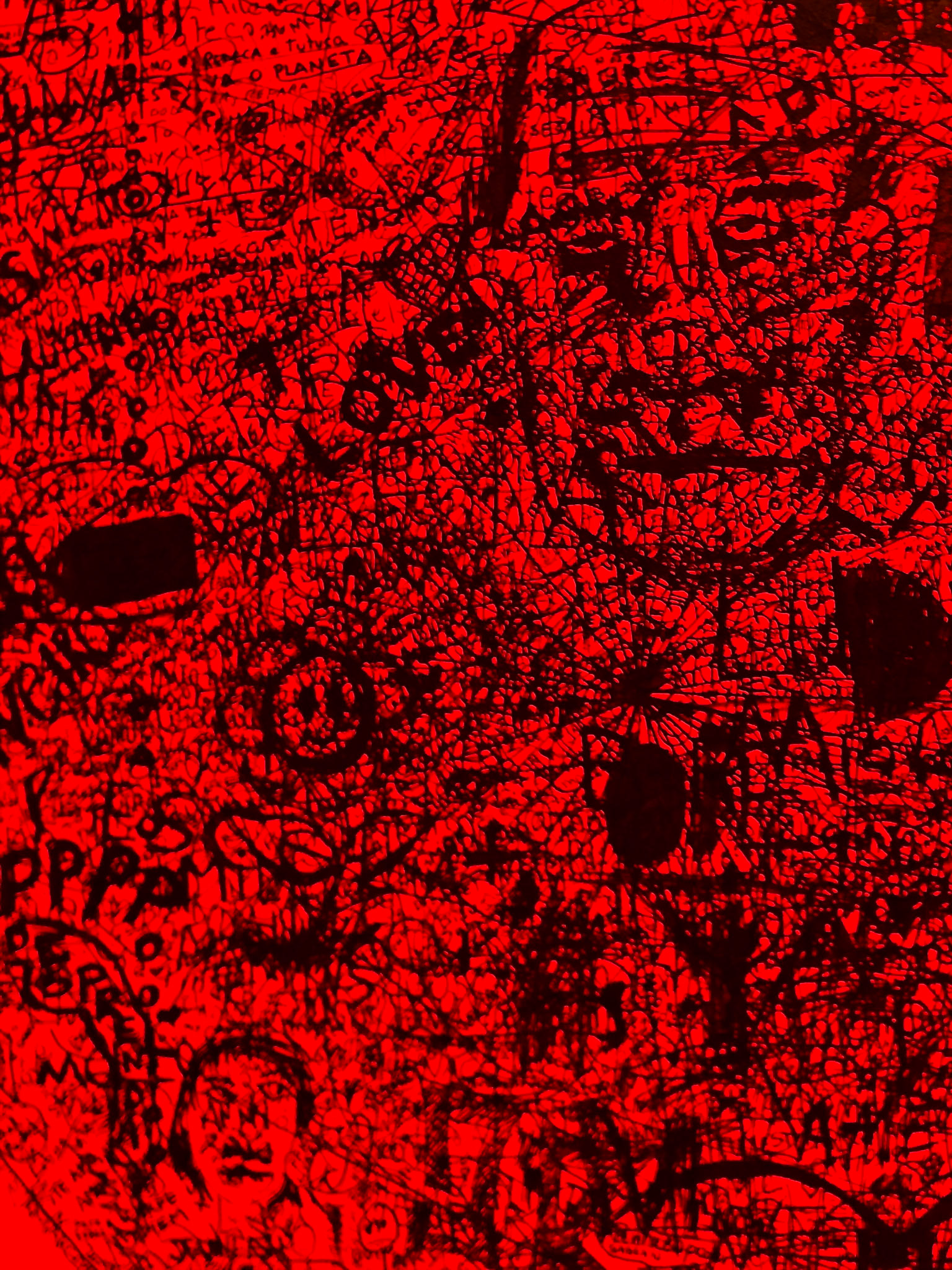
Agora (detail)
"Agora" was commissioned for the exhibition “Somos Muit+s” (We are many), at the Pinacoteca do Estado de São Paulo, São Paulo, Brazil. A processual participatory action-installation that lasted two months, eight hours a day, Agora manifested the visitors' desire for action, intervention, and collective occupation of an environment that is usually hostile to them. The work was conceived as a space for encounter, discussion, and cultural-political experimentation, with the collective painting on the room's walls serving as a powerful symbol of unity and shared experience, as well as of the constraints of institutionalised art that presents itself as critical and political while remaining dependent on the institutions it criticises. Pens used for painting were available to visitors, fostering active participation. However, they were attached to the walls by chains, adding an element of limitation and control to the process. The more visitors painted and drew on the walls, the more their contributions became invisible, highlighting the complex dynamics of visibility and participation. The walls and floor of the space were painted red, a colour chosen for its historical and political significance. This deliberately alludes to the struggles and movements shaping Brazil's history. Two megaphones hung from the ceiling at opposing corners of the room, interconnected by a chain. They were accessible to the public. Once a person used one megaphone, the other was pulled higher and became too high to use. This underscores the limitations of the art institution concerning its visitors and its societal role, revealing the contradictions of participation within a market-oriented art system. The English word "agora" has a homograph in Portuguese, which means "now", "immediately". This coincidence adds meaning to the immediate actions practised by the participants in their urgency, abolishing the cold, codified "mediateness" of the museum environment.
